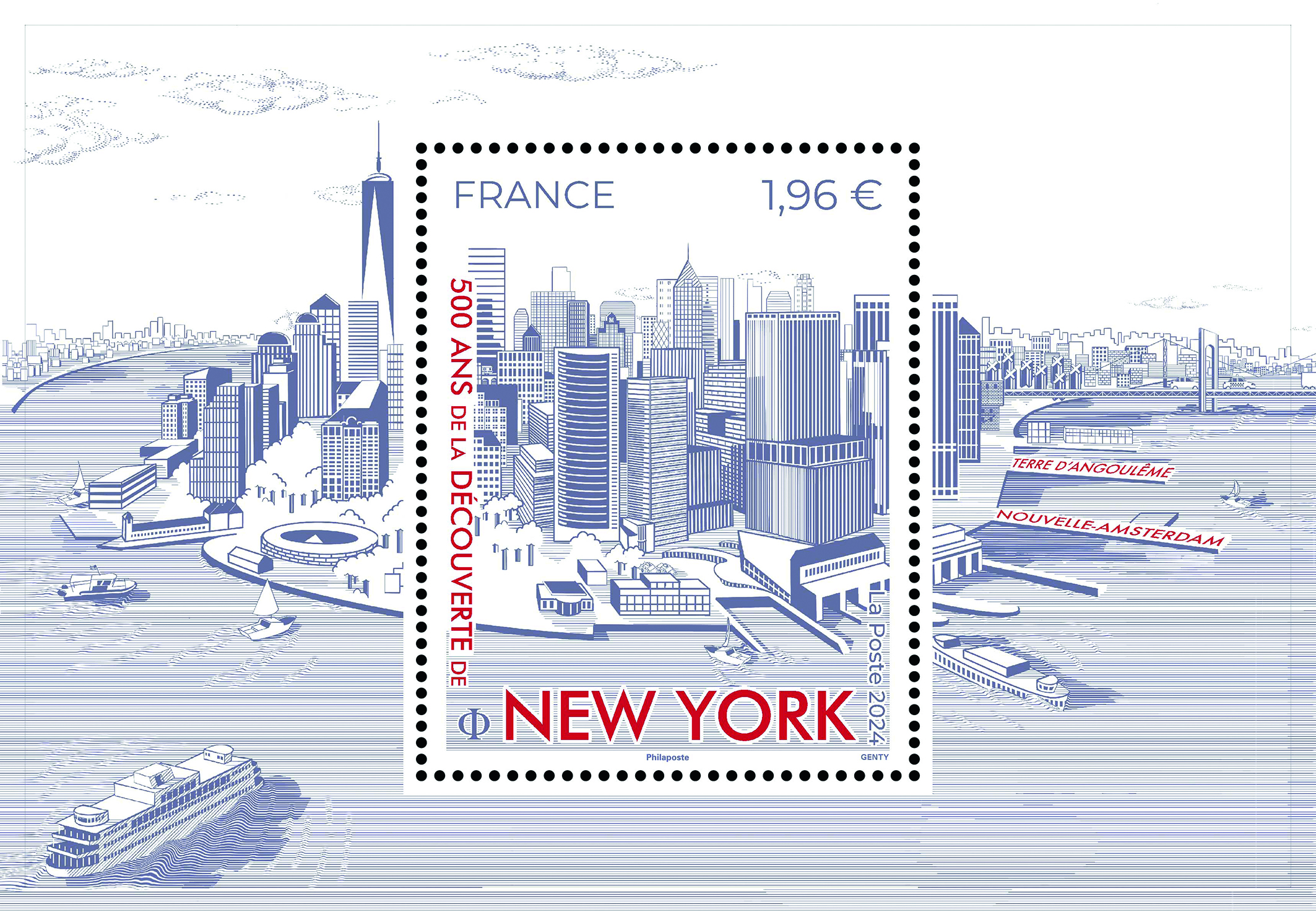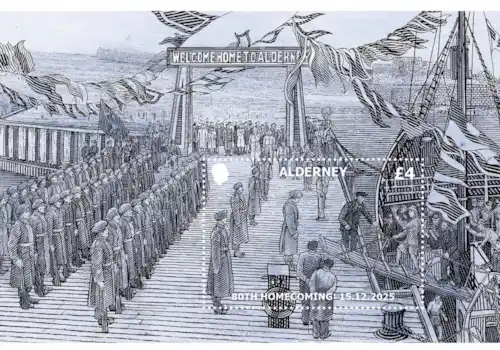20 May 2024
|
On 15th April, La Poste issued a miniature sheet containing a stamp to mark the 500th anniversary of the discovery of New York.
The stamp and miniature sheet, which features an illustration by engraver and illustrator Louis Genty, is available from La Poste, with prices starting at €1.96. The miniature sheet shows a view of New York city as it is known today. The boat shown in the bottom left-hand corner is a nod to the ship of Florentine navigator Giovanni da Verrazzano, the first European to encounter what is know today as New York Bay. To the right, the Verrazzano bridge, completed in 1964 and dedicated to the navigator, is depicted.
As well as the miniature sheet, a souvenir sheet has been released by La Poste, priced at €4.50, also illustrated by Genty.

Above: The miniature sheet released by La Post features an illustration by Louis Genty
New York, a French history
At the end of the 15th century, a succession of expeditions on behalf of the great European powers took place. In 1523, on behalf of King François I, Florentine navigator Giovanni da Verrazzano set sail on a ship named the Dauphine in search of a passage to the Pacific Ocean and the Far East.
Before this expedition, Verrazzano had already explored the region of Newfoundland and the Saint Lawrence in 1508. On his expedition aboard the Dauphine, he travelled up the American coast searching for a passage to the Indies and brought back some of the first descriptions of the coastline. On 17th April 1524, Verrazzano, became the first European known to encounter what is now New York Bay. At the time he named the region New France and the bay, in homage to the King, was named New Angoulême.
For a long time Verrazzano’s journey remained unknown. By the time he returned to France. Queen Claude of France had died and François I left for Italy where he would go on to lose the Battle of Plavia. The discovery of New York was later attributed to English navigator, Henry Hudson, who was travelling on behalf of the Netherlands at the beginning of the 17th century. Verrazzano’s expedition came to light in the middle of the 20th century when a French academic retraced the voyage.







